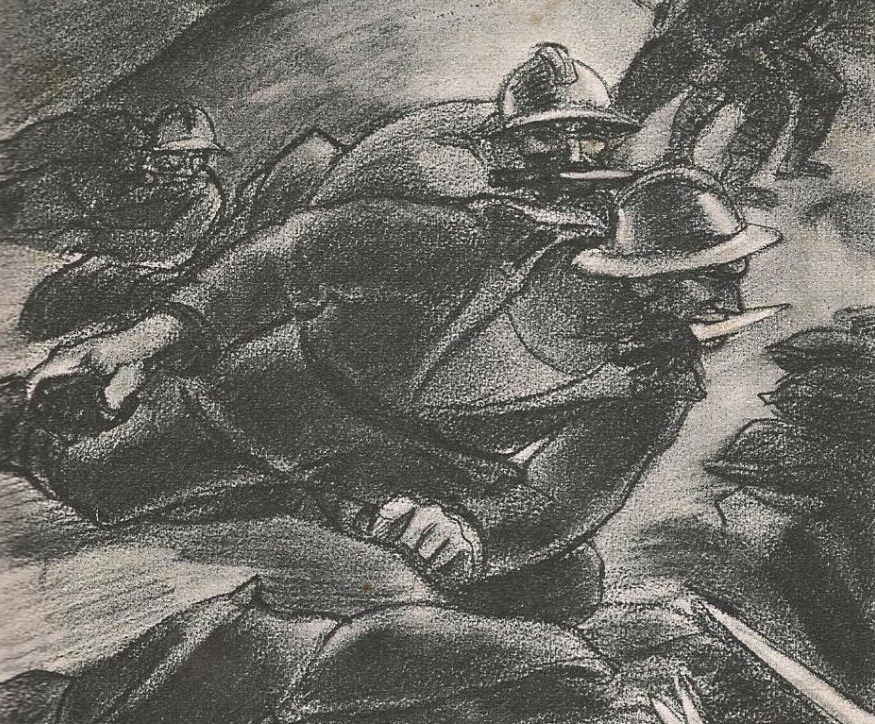It’s fair to say that the Italian military doesn’t have the rosiest memory of war in the early 20th century. Jokes are frequently made that the Italian tanks used in World War II only had reverse gears while World War I is remembered most for the Caporetto disaster and the failure of Italy to be a major voice at the Versailles. What many don’t know however is that the Italians did have one regiment who were feared on the battlefield.
Translated as ‘The Daring Ones’, the Arditi were a new wave of shock troops formed in 1917 and were integral in the eventual victory on the Italian Front over the battle-weary Austro-Hungarian Empire.
The Arditi organisation
Evolving from small raiding parties used in the army, the units contained individuals who were on the whole better educated and motivated than the standard infantry and predominantly recruited from the ranks of the Alpini mountain troops and the Bersaglieri light infantry.
The Arditi were just one of a clutch of new ideas put forward by military leaders like Cristoforo Baseggio and Giuseppe Alberto Bassi. Heavily armoured and used in heavy duty assaults, their weaponry was the best the army had to offer. Villar-Perosa machine pistols and Fiat machine guns were issued to the regiments along with grenades and cavalry.
The units would be slightly smaller than their infantry equivalents with five officers, 41 NCOs and 150 men. From the start, the Arditi were famed for their eagerness to engage in hand-to-hand combat and were given pugnale fighting knives to quench this bloodthirst. Special training centres were set up to induct more into this way of fighting and turn the balance of the war in the Alps.

The Arditi in the frontline
The location for the Arditi to show off their skills was the perilous Italian Front. Fighting against the Austro-Hungarian Empire, much of the conflict took place on the slopes of the Southern Alps. The front soon reached a stalemate and injuries began to mount up. The Arditi objective was to breach enemy defences and preparing the way for the main arm of the infantry to advance.
The strategy relied on surprise, speed and careful planning and the special forces would advance shortly after an initial artillery barrage, throwing grenades as they went. This would fool the enemy into believing that the artillery attack was still taking place and in the confusion, the Arditi would hop into the trenches and dugouts and cut throats with their sharp knives. Rifles were rarely, if at all, used so the troops relied on flamethrowers, grenades and daggers. The strategy was known as the Reparti d’assalto and endured great success in 1917 and 1918.
The downside was that the tactics were vulnerable to counter attacks and the sheer ferocity of the Arditi meant they were not suited to defensive positions if it all went wrong.
The first recorded Arditi attack took was on the night of 18 August 1917 on Monte Fratta on the Isonzo Front. Capturing 500 soldiers and eight machine guns with only light casualties, the first operation was a resounding success.
The following month things got even better as the Austro-Hungarian positions at San Gabriele were battered as the Arditi took 3,100 prisoners, 55 machine guns and 26 artillery pieces. This effective way of breaking the stalemate of trench warfare helped tip the balance on the frontline and contributed to the ultimate Italian victory.

Benefits of being a super soldier
The Arditi were considered superior to the standard infantry grunts and their heroic displays were met with rich rewards. They received higher pay, better rations and comfier accommodation and never served in the trenches. They were taken from place to place via truck transport rather than painstaking marching and were overall given more leave and less discipline. If you had the bravery to be an Arditit, you would reap the rewards.
The daring stories of the Arditi became almost a thing of legend and spurred the rest of the army to emulate their feats. Demobilised after the war’s end, the Arditi did anything but fade into obscurity and would play a large role in the coming of Mussolini and the rise of Italian Fascism…
You can read Part II of our article on the Arditi here
For more on 20th century Italian history pick up the new issue of All About History here or subscribe now and save 25% off the cover price.
References:
- http://www.worldwar1.com/itafront/arditi.htm
- http://encyclopedia.1914-1918-online.net/article/arditi
